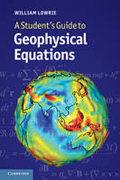
The advent of accessible student computing packages has meant that geophysicsstudents can now easily manipulate datasets and gain first-hand modeling experience – essential in developing an intuitive understanding of the physics of the Earth. Yet to gain a more in-depth understanding of physical theory, and to develop new models and solutions, it is necessary to be able to derive the relevant equations from first principles. This compact, handy book fills a gap left by most modern geophysics textbooks, which generally do not have space toderive all of the important formulae, showing the intermediate steps. This guide presents full derivations for the classical equations of gravitation, gravity, tides, earth rotation, heat, geomagnetism and foundational seismology, illustrated with simple schematic diagrams. It supports students through the successive steps and explains the logical sequence of a derivation – facilitatingself-study and helping students to tackle homework exercises and prepare for exams. INDICE: Preface; Acknowledgements; 1. Mathematical background; 2. Gravitation; 3. Gravity; 4. The tides; 5. Earth's rotation; 6. Earth's heat; 7. Geomagnetism; 8. Foundations of seismology; Appendix A. Magnetic poles, the dipole field, and current loops; Appendix B. Maxwell's equations of electromagnetism; References; Index.
- ISBN: 978-0-521-18377-2
- Editorial: Cambridge University
- Encuadernacion: Rústica
- Páginas: 281
- Fecha Publicación: 01/06/2011
- Nº Volúmenes: 1
- Idioma: Inglés
